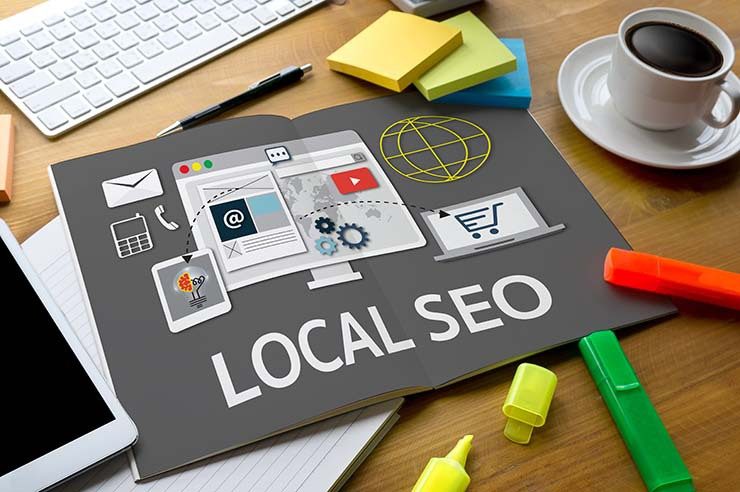The online space presents your business to the world, but your local presence shouldn’t be left to linger in the dust. A local SEO agency can deploy specific tactics to help your site be found in your city, county, and even region with improved organic rankings.
People love to support their neighborhood businesses, but they must know you’re out there and open for business. As an example, the increasing popularity of shopping locally is a boom for restaurant owners, microbreweries, and makers of all sorts.
The web is an infinite realm, but the locals could be your best customers. Make sure they know you’re open for business. In this guide, you’ll learn how to improve rankings and enhance search results for your business with local SEO, as well as features needed to grow sales.
Emphasize Hyperlocal Marketing
Hyperlocal marketing – a form of niche marketing that targets consumers in a specific city (bicycle repair in Jacksonville, for example) – has begun to take off as a way to target customers near one’s local business. Granted, before the Internet and mediums like television and radio, it was the only way to market one’s business. Now, businesses have the tools and technology to target certain individuals within their local market.

Google has played a key role in this trend by reducing the number of pages available in their map search results. More importantly, Google continues to see an increase in “near me” and “nearby” searches, referred to as “I-Want-to-Go moments.” In turn, businesses need to place importance on optimizing for both local and mobile as 94% of people in the United States with smartphones search for local information on their phones.
Know Your Local Audience
Before you can speak the language of your audience, you must get to know them. Potential local customers already have an idea of what they’re searching for, which means it’s up to you to convince them to choose you. Ask yourself questions about your customers such as:
- How old are they?
- Where are they located?
- What’s their gender?
- Where do they hang out online?
- What are their interests?

Most customers don’t respond well to direct sales. Instead, they’re more interested in information that pertains to their need. They could be looking for store hours, reviews, or perhaps local SEO services to improve their own search presence.
Create Content: Localized SEO Content is King
When writing localized marketing copy, it’s important to inform and educate your audience to help them make better buying decisions. Content on your site should speak to their needs and questions, and this will help you gain their trust. It must be engaging, relevant, well-written, and easy to digest. If you can tick off these characteristics, visitors will be more likely to convert because they’ll be pleased with their experience.
Incorporate relevant, localized keywords into your content. If you own a bicycle repair shop in Jacksonville, for instance, you’ll want to optimize your site with keywords like:
- Jacksonville bicycle repair,
- Bicycle shop in Jacksonville,
- Where to fix a bicycle, and
- Other localized, niche variations.
Keep in mind, however, that keyword stuffing is a bad idea. Search engines can sniff out unnatural keyword usage, and visitors could be distracted by the wording or overuse of keywords, ultimately causing them to go elsewhere. Keep visitors engaged by executing natural keyword placement with grace.

Remember to include helpful outbound links that can enhance your content. Link externally to trusted sources and partners, and there’s a chance those sites may link back to you. As your reach and brand recognition increase, so will your reputation and visibility in local search results.
Use NAP Citations
What’s NAP? This acronym stands for Name, Address, and Phone number, and this information should be listed on every page of your website. A common practice is including your NAP in the footer (much like the way Oyova does), but it can also be listed above the navigation. A phone number at the very least is recommended in the navigation no matter where you decide to place the NAP.
Wait, what if I have more than one location? Consolidating everything to one page isn’t great for local SEO, so if this is the case, create a page for each location and apply the respective NAP to that page, along with any other helpful information of course. And rather than stuffing addresses and phone numbers for all locations into your footer, go with your main or preferred location.
Take Mobile-First Indexing to Heart for Local SEO
Chances are, most of your customers are coming from Google, so following their search engine marketing guidelines is imperative.
And per Google, mobile-first indexing means they’ll “predominantly use the mobile version of the content for indexing and ranking.” Until recently, Google’s index used the desktop version of a page’s content when evaluating its relevance to the user’s search query. With so many people searching on their smartphones (and in a localized manner to boot), it makes sense now that Google’s index will primarily use the mobile version of a page’s content going forward.
The desktop site version of your business might be difficult to use on a mobile device. There’s obviously less room on a phone’s screen than on a computer’s so you must focus on what’s most important when conveying visuals to your visitors. Have you ever had to pinch with your fingers to zoom in to see stuff? Or can’t easily click links and buttons? Users find this to be a frustrating experience and will probably abandon your site, and to make matters worse, go to a competitor. A mobile-friendly site should be readable and usable for smartphones. Take Google’s free test to see how easily visitors can use your site on their mobile devices.
Make Your Site User-Friendly
People are impatient. They’re demanding more and more each day from their experience on the web, especially when searching for information about local shops and restaurants. If your website is not user-friendly then your business will suffer. It only takes a few seconds to lose the attention of a viewer.

Common problems that companies face with local SEO unfriendliness can include:
- Slow page loading (often due to large images and older designs)
- Poor responsiveness for mobile devices
- Confusing design of pages
Help your customers get what they need. If you own a restaurant, local searchers may want to get your business address or look at the menu. If you repair bicycles, they could be interested in reading customer reviews or looking at photos of your repair shop. So, design your site to help make it easier for customers to find what they need.
Remember that you don’t have to sacrifice aesthetics if you build a responsive website. Outside of maximizing the impact of your content, effective local SEO practices involve redesigning the website to bring it up-to-date with our fast-paced and increasingly on-the-go society. If your website displays in an odd or difficult-to-maneuver way on smartphones, that can cause a deep dive in your conversion rates.
Improve Search Results with Local SEO Today
As a business owner, you’re certain to have a full plate of responsibilities. To continue to grow and outcompete, your online presence needs to be authentic, dynamic, user-friendly, and most importantly – effective.
A local SEO agency can help your online business in many ways, helping you to achieve and exceed your business goals through quality, targeted content, and customized strategies for success.
This post was selected as one of the top digital marketing articles of the week by UpCity, a B2B ratings and review company for digital marketing agencies and other marketing service providers.
